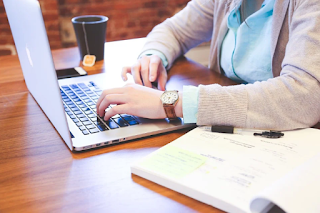Computer fundamentals
In today’s world knowledge of computer is much essential, because computer plays a vital role in our day to day life. So today we are going to understand some basics of computer. So without wasting time let’s move to the topic.
Introduction to computer:-
A device which accepts the data according to the instructions, process the data according to the instructions, and produces useful information is known as computer. This device converts your manual command to a digital signal and makes your task easier.
Full form of computer:-
|
|
Common |
|
|
Operating |
|
|
Machine |
|
|
Particularly |
|
|
Used in |
|
|
Trade |
|
|
Education |
|
|
& Research |
WORKING OF A COMPUTER OR HOW A COMPUTER WORKS?
A computer is an information processing machine. It works with number of interrelated components that work together to convert data into information in a step by step process.
The steps on which a computer works are given below:-
Ü Input: we give an input to a computer by using an input device like keyboard.
Ü Process: the computer process data according to the given instructions. This task of processing is carried out in CPU.
Ü Output: the computer gives out useful information according to your given instructions.
But how all the work is done? Let’s find out!
This whole task is performed by different hardware and software. There is main hardware present in a computer system (maintained below):-
1. Monitor
2. CPU
3. KEYBOARD
4. MOUSE
5. & SPEAKER
UNDERSTANDING ABOUT CPU
(CENTRAL PROCESSING UNIT)
CPU or a microprocessor is the
main part of a computer system it is also known as the brain of computer. All
the processing of the system is done by the CPU. The speed of a computer
depends upon its microprocessor. Dual core, core2 duo, i3, i5, i7 are commonly
used microprocessor these days.
The central processing unit consists of three main parts namely the arithmetic logic unit, registers and controls the unit. All these work together to process the computers data.
Ü Arithmetic logic unit (ALU): The ALU handles all the mathematical calculations and logical comparisons such as addition, subtraction, less than, equal to, etc., which are to be performed on the data.
Ü Registers: they are small memory units used to store intermediate data, instructions and results while processing. In other words, they hold the information on which the CPU is currently working.
Ü Control unit: the CU controls the movement of data inside as well as outside the CPU. It communicates between registers and the ALU and between the CPU and all the input, output and storage device. It directs all the parts of the computer system to perform their tasks.
Input devices:-
Those devices which allow the user to gives the input that is data and instructions are called input devices. Some examples of input devices are:-
1. Keyboard
2. Mouse
3. Joystick
4. Light pen
5. Trackball
6. Scanner
7. Digital camera
8. & graphics tablets.
Output
devices:-
Those devices which allow the user to receive the output from the computer are known as output devices. Some examples of output devices are:-
1. Monitor
2. Printer
3. Plotter
4. Speaker, etc.
So
this was some information about the computer fundamentals.
If
you found the information useful, regularly visit and subscribe the website to
learn technology in easier way.
Thank you for your visit.
click here to know 25 technology facts
